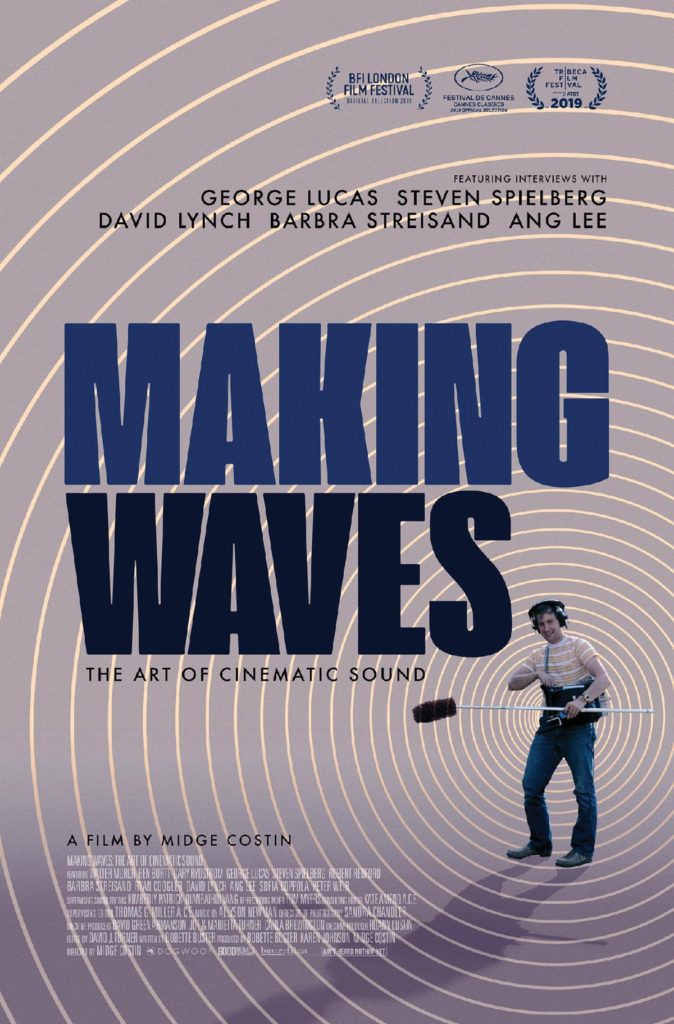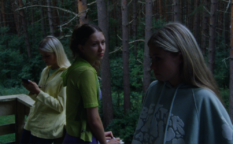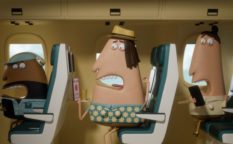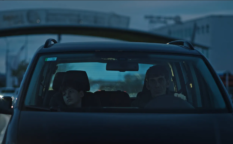Film Review: Making Waves: The Art of Cinematic Sound (2019), by Midge Costin

Part monument to the great pioneers of sound, part instructional film, Midge Costin’s Making Waves: the Art of Cinematic Sound is an entertaining, California-centric primer on the often neglected world of sound designers, Foley artists and mixing engineers. Featuring interviews with David Lynch, Steven Spielberg, George Lucas, Barbra Streisand (who knew she brought stereo sound to the cinemas?), Sofia Coppola, Ang Lee, Christopher Nolan, Robert Redford, Peter Weir and Hans Zimmer, the film’s real heroes are the wave-making mavericks Walter Murch, Ben Burtt and Gary Rydstrom. Did you know that sound design got started with a monster movie made in 1933? What did zoo animals contribute to Star Wars? Ever wondered, perhaps when reading film credits as they roll up the screen, what exactly ADR is?
Making Waves answers these and many other questions you may have never thought to ask. Yet this is not just a film for pub quiz enthusiasts. Making Waves becomes much more than a cinephile’s encyclopaedia of technical innovations when it traces the sometimes outlandish history of New Hollywood and tethers tech innovations to new cultural desires. Most of the invisible pleasures of today’s corporate entertainment have their roots in the avant garde. Without John Cage and musique concrète artists Pierre Henry and Pierre Schaeffer, our emotional experiences at both independent cinemas and the Multiplex would be greatly impoverished.
It was partly due to the invention of the portable Nagra recorder (allowing precise on-location recording) that inspired Francis Ford Coppola, George Lucas and Walter Murch to found American Zoetrope, which recovered from financial disaster when Coppola was more or less forced to direct a “sleazy” gangster film that had been turned down by no less than 12 directors. That film, The Godfather, used new sound techniques to raise standards of artistry in Hollywood filmmaking. It also showed the dying studios how they might compete with the reigning purveyor of fact and fiction, the ubiquitous TV set.
Costin’s deeper message about creativity may have benefitted by focusing less on the elaborate construction of famous scenes and more on the spirit of experimentation. Although Costin lets us experience technology as another extension of human expression as she tells us how Walter Murch developed modern sound design with Apocalypse Now by creating an orchestra of sound artists, how Ben Burtt reinvented the fantasy (or faux sci-fi space opera/postmodern fairy tale) genre by relying on real recordings rather than traditional synths in Star Wars, and how Gary Rydstrom became the principal wave-maker of Pixar when he infused computer-animated lamps with personalities, the most insightful part, covering the birth of New Hollywood, reminds us that rebellion is often the prerequisite for renewal.
Making Waves: the Art of Cinematic Sound is the nominee for the Critic’s choice Documentary Awards as Best First Documentary Feature.
















